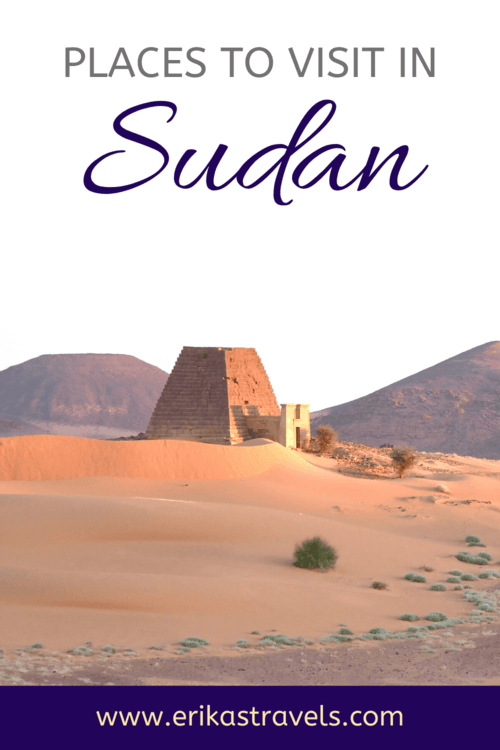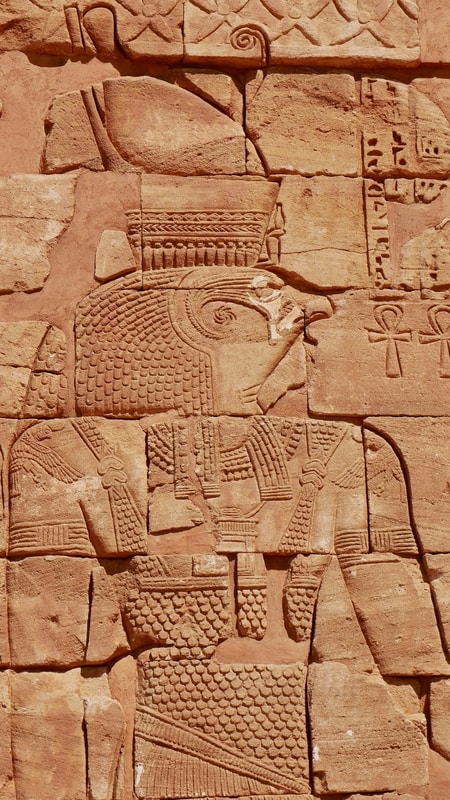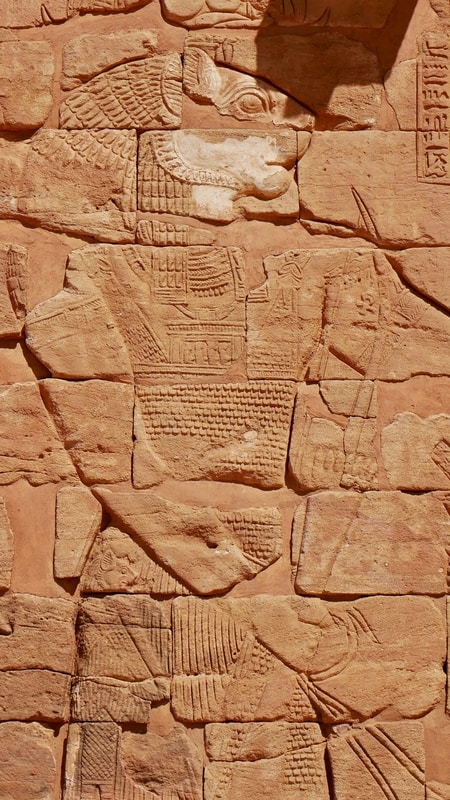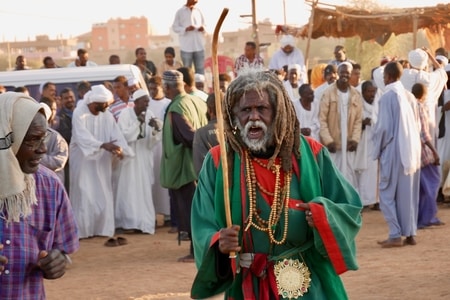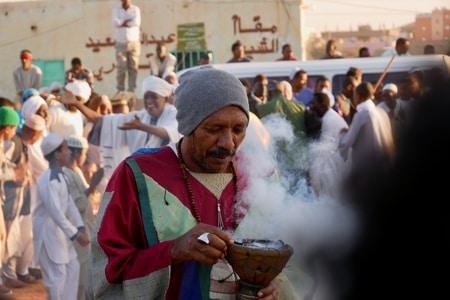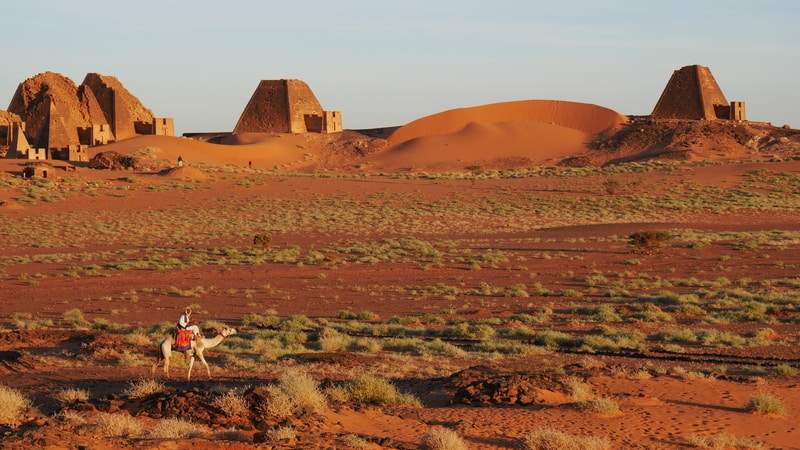
Tourist Attractions in Sudan: Africa’s Nubian Kingdom
Over the past few decades, Sudan has made headlines for all the wrong reasons. As a result, the country’s name often conjures images of bloodshed and brutal dictatorships, while its wealth of treasures have been all but ignored. Most people are not even aware that, beneath Sudan’s shifting grains of sand, lie remnants of an empire that once rivaled Ancient Egypt. Or that the country contains more pyramids than any other place in the world.
Sudan offers an unexpected array of things to do, places to see, and experiences to be had. It is a country that boasts tremendous attractions, heaps of natural beauty, and a population that is among the friendliest in the world.
Sure, traveling in Sudan is not for the inexperienced adventurer. Obtaining a visa can be tricky and confusing. Hotel booking websites are largely inaccessible. Information on the tourist attractions in Sudan is scant, at best.
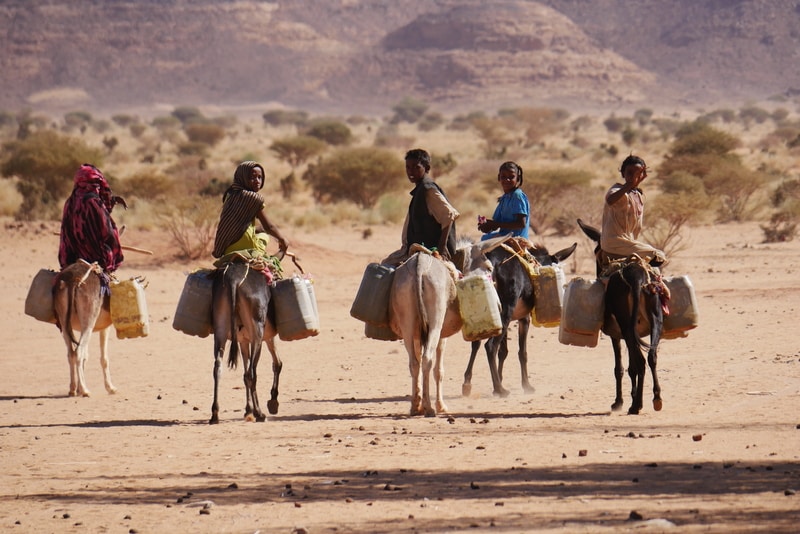
But with a little effort, the vast swath of land flanking the Upper Nile is a wonderland for intrepid adventurers. It is a country that is as welcoming as it is challenging, and as beautiful as it is undiscovered.
TRAVEL IN SUDAN: AN OVERLAND ADVENTURE
Dan and I traveled to Sudan as part of a larger Egypt vacation. We combined the two countries into one trip because of their inextricably linked histories. Creating a comprehensive Egypt and Sudan itinerary would give our trip continuity and allow us to trace Egyptian Civilization throughout ancient history.
Our itinerary began with the Pyramids of Giza, and continued on a Nile cruise—past Luxor and Aswan—to Abu Simbel. From there, we returned to Cairo and flew to Khartoum for the Sudanese part of our Nile-side adventure.
Due to the offbeat nature of Sudan’s tourist attractions, we chose to explore the country on an overlanding tour with Dragoman. I’d traveled with Dragoman previously, on a three week tour through Togo, Benin and Ghana. In doing so, I’d learned how valuable it is to have someone plan the tricky logistics associated with traveling to off-the-beaten-path destinations in Africa.
With its limited infrastructure for independent travel, Sudan is no exception.
In order to facilitate our travels in Sudan, Dragoman took care of obtaining our Sudan visa invitation letter, setting up visa on arrival at the airport, and completing the registration process. It also allowed us to visit the top tourist attractions in Sudan without having to worry about navigating the roads, figuring out public transportation, or choosing places to wild camp.
TOP SUDAN TOURIST ATTRACTIONS
Sudan is a country replete with things to see. Its tourist attractions include fascinating urban delights, natural landmarks, and the long-lost relics of ancient civilizations. Our eight day overlanding tour with Dragoman began and ended in Khartoum. Along the loop, it brought us to many of the top places to visit in Sudan—including the spectacular massif of Jebel Barkal, the solitary Temple of Soleb, the elaborate carvings of Naqa and Musawwarat, and the majestic Pyramids of Meroe.
THE OLD KINGDOM OF DONGOLA
After an orientation day in Khartoum, we hopped on our big orange tour truck and headed northward, into the reaches of the desert. The first stop on our Sudan itinerary was the deserted town of Old Dongola, halfway between Khartoum and the Egyptian border. Old Dongola lies at the center of Sudanese Christian tradition. It was once an important city in Medieval Nubia and the capital of the Makurian State.
For about an hour, we walked atop a blanket of pottery shards that probably should have belonged in museums, and admired ruins that once represented basilicas.
The Throne Hall of Old Dongola dates to the 5th century, though many of the city’s remaining structures are the product of subsequent generations. A 17th century Islamic cemetery with beehive tombs is a testament to the importance of Old Dongola in post-Medieval times as well.
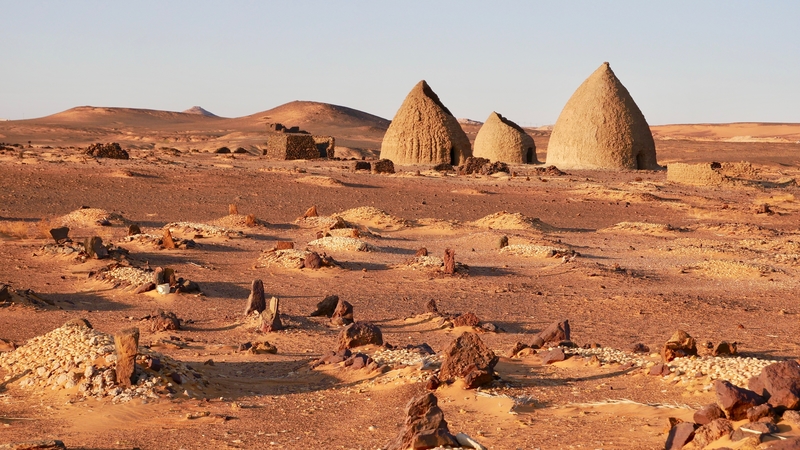
Visiting Old Dongola may be one of the top things to do in Sudan, but we did not encounter any other tourists during our tour. The archeological site was completely deserted—like an abandoned ghost town that has been completely neglected by the world at large.
THE KERMA ARCHAEOLOGICAL SITE
The second day of our Sudan tour brought us back in time, to the beginnings of the Kushite Kingdom. Kush is a Nubian land that lies between the first and fourth cataracts of the Nile, in modern-day Sudan. The legendary Kingdom of Kush helped define the political and cultural landscap of northeastern Africa for more than a thousand years.
The Ruins of Kerma are remnants of an the early Kushite Kingdom that ruled Nubia between 2450 BC and 1450 BC. The ancient city’s sprawling ruins center around a large adobe temple known as the Western Deffufa.
From the top of the ancient structure, a blueprint of the city stretches toward a forest of palms on the banks of the River Nile.
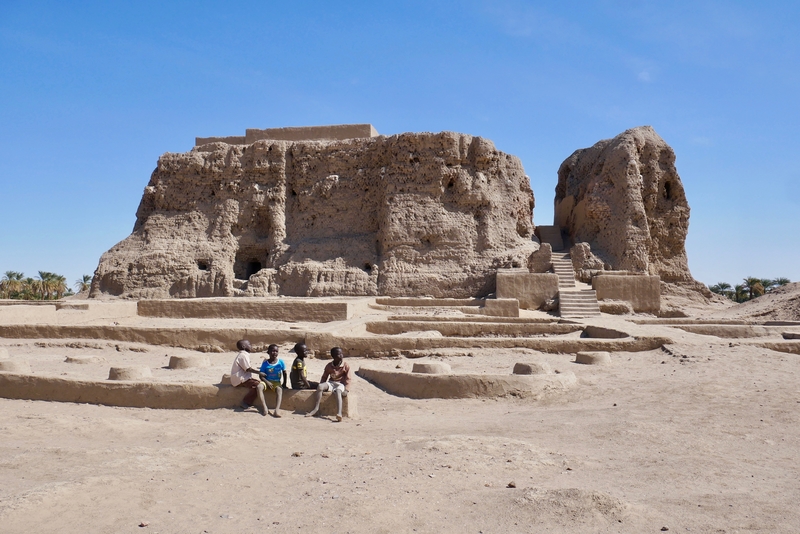
Kerma is one of the largest archaeological sites in ancient Nubia. It has produced decades of extensive excavations and research.
Today, aside from lumpy remnants of the Western Deffufa and the delineated markings of old living quarters, not much remains of Kerma’s once-powerful city.
Still, it is a fascinating place to visit and a testament to the little-known wonders that lie lost amongst the vast expanses of Sudan’s desert.
THE TEMPLE OF SOLEB
After visiting the remnants of the Kerma Kingdom, we continued toward the village of Wawa in time for nightfall. There, we settled into a small guesthouse and prepared for a sunrise visit to the Temple of Soleb the following morning.
To reach the Temple of Soleb from Wawa, we walked to the shores of the Nile through a groves of palms, took a small boat across the river, and made our way past cultivated fields of beans and wheat. When we reached the confines of the archeological site, we found a place to sit and watch the sun illuminate the temple’s rose-hued columns.
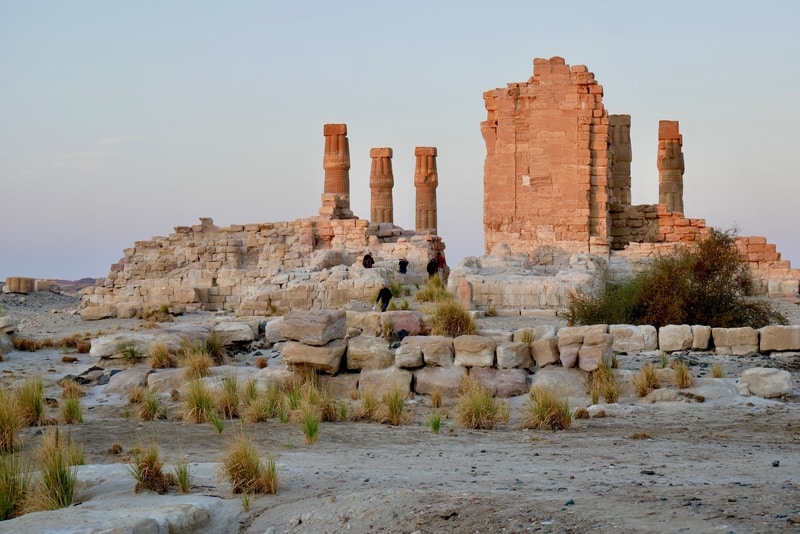
The Temple of Soleb is the southernmost temple built by eighteenth dynasty Pharaoh Amenhotep III—the builder of the extraordinary Temple of Luxor in Egypt. It may be much more modest than its Egyptian counterpart, but Soleb’s comparative isolation makes it nonetheless evocative and magical.
Like most other tourist attractions in Ancient Egypt and Nubia, the Temple of Soleb sits on the banks of the Nile, where fertile palm groves give way to the desolation of the desert.
I imagine that reaching the Temple of Soleb is quite difficult without an organized tour or rental car. Despite being one of the top tourist attractions in Sudan, the Soleb Temple has no public transportation links and draws only a small trickle of tourists every year—making it all the more special for those who choose to make the haul.
THE NURI PYRAMIDS
Everyone has heard of the Pyramids of Egypt. The mighty ancient wonders are emblazoned on travel brochures, impressed on the imaginations of young scholars, and at the forefront of many travel bucket lists. Yet, few people know that Egypt only contains a small percentage of the ancient Pharaonic structures. In fact, Sudan claims dozens—if not hundreds—more pyramids than Egypt.
Situated near Jebel Barkal, the Nuri Pyramids are among the most impressive of their kind in Sudan.
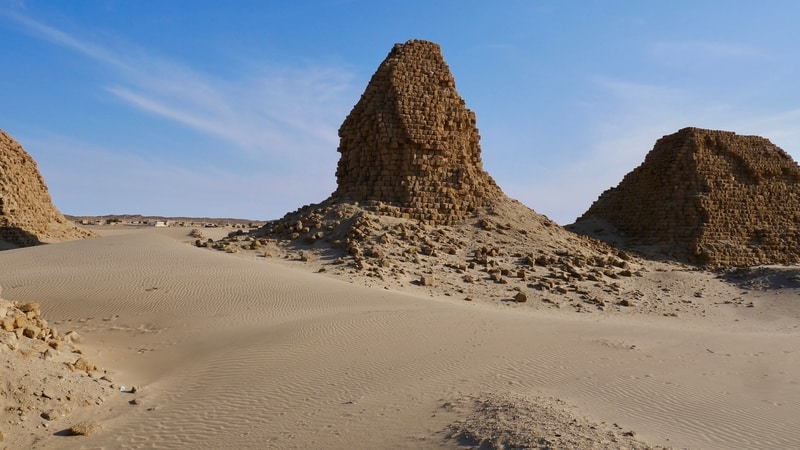
We explored the Nuri Pyramids on the third day of our Sudan tour, following a sunrise visit to the Temple of Soleb.
The dilapidated Pyramids of Nuri—among the largest in Sudan—lie scattered amidst low-lying sand dunes. Dating from around the 7th century BC, they are the oldest and largest pyramids in Ancient Nubia.
We spent about an hour clambering around the archeological site and admiring the unobstructed views of its age-old treasures.
Once again, a lack of other tourists made our experience all the more surreal.
JEBEL BARKAL
From afar, Jebel Barkal is a nondescript lump of earth that rises above the sandy plains of north-central Sudan. Yet, upon closer examination, the sacred mountain reveals its magic.
Visiting Jebel Barkal is, without a doubt, one of the top things to do in Sudan. The sacred mountain boasts unparalleled views of the Nile River and its nearby pyramids and temples. And beneath its towering massif, it conceals the ruins of an ancient temple that has been consumed by the elements and nearly lost in time.
Following an afternoon visit to the Nuri Pyramids, our tour group scrambled to the top of Jebel Barkal for sunset.
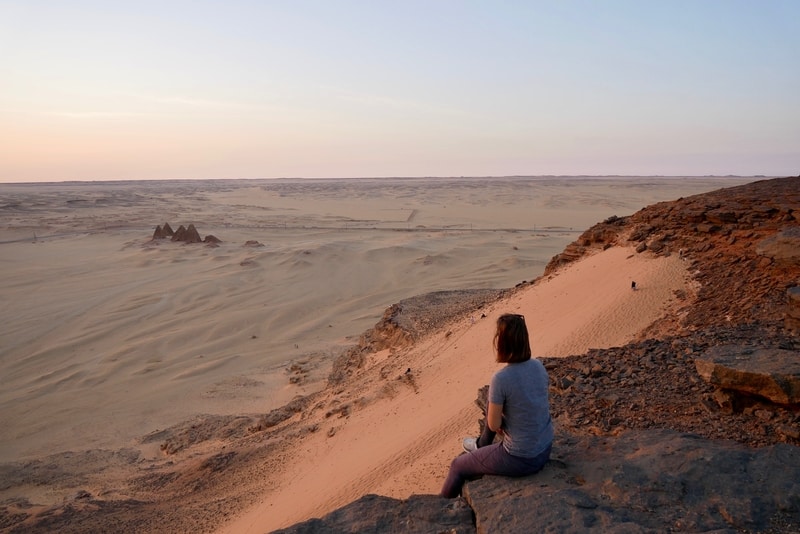
I’m not sure what I expected of Jebel Barkal, but I certainly didn’t imagine it to be such a prominent highlight of our itinerary. Photos I found online did little justice to the area.
From its summit, surreal 360 degree panoramas took our breaths away. We could see a small pyramid grouping on one side, and unparalleled views of the Nile River and Amun Temple on the other.
In 2003, the mountain (in conjunction with the historical city of Napata) was named a UNESCO World Heritage Sites. I can certainly understand why.
THE TEMPLE OF AMUN AT JEBEL BARKAL
The Napatan Ruins of Jebel Barkal represent the southernmost permanent settlement in the New Kingdom of Egypt. They are the main Nubian cult centre of the god Amun and were once of great importance to the Kushite Kingdom.
Napata was an ancient Nubian city, at the site of modern-day Karima. The entire complex encompasses both the Nuri Pyramids and the Temple of Amun at Jebel Barkal.
The Nubian king Piye expanded Barkal’s Amun temple complex, creating a southern version of the Amun temple at Thebes (near Luxor in modern-day Egypt).
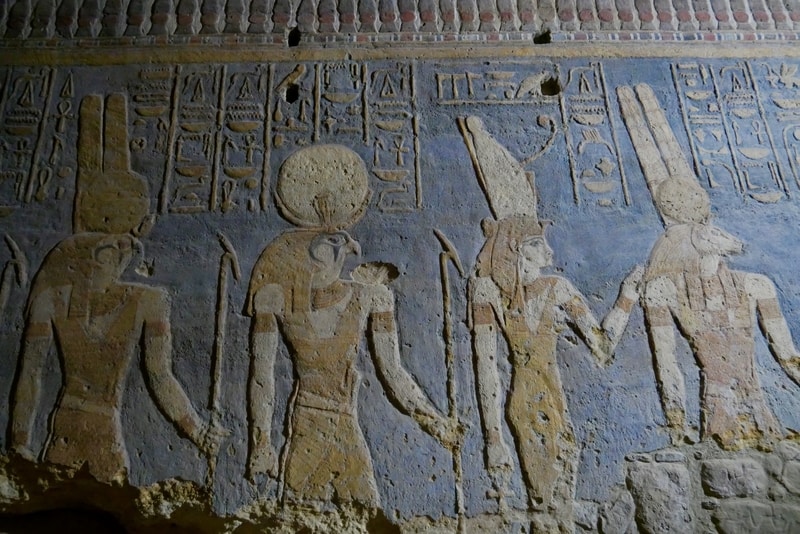
Today, the great Amun Temple of Jebel Barkal lies largely in ruins. A few piles of rocks lies scattered about, and some statues of rams remain relatively well-preserved.
A small temple dedicated to Mut lies adjacent to the Amun Temple. The Mut temple contains two pillars adorned in carvings of the cow-headed goddess Hathor.
After about half an hour of exploring the area, our guide tracked down the keys to a small hidden chamber that lies hewn inside the rocks of Jebel Barkal, behind Mut’s temple. When we entered inside, we were wowed by the vivid and colorful depictions of Egyptian gods. We felt privy to a secret world that few know exist.
It was incredibly special.
THE MEROE PYRAMIDS: SUDAN’S TOP TOURIST ATTRACTION
The Meroe Pyramids are, without a doubt, the top place to visit in Sudan. They are a mainstay of nearly every Sudan itinerary, and among Africa’s most impressive archeological sites. The Meroe Pyramids are a group of roughly 200 structures that are over 2,500 years old. Though smaller than the Great Pyramids of Giza and Dashur, the Pyramids of Meroe lie beautifully situated among low-lying dunes of blood-red sand.
The site’s 200 pyramids have varying levels of preservation. Most pyramids have no tops, thanks to an Italian treasure hunter who blew them off in the 19th century in order to loot their tombs for buried valuables.
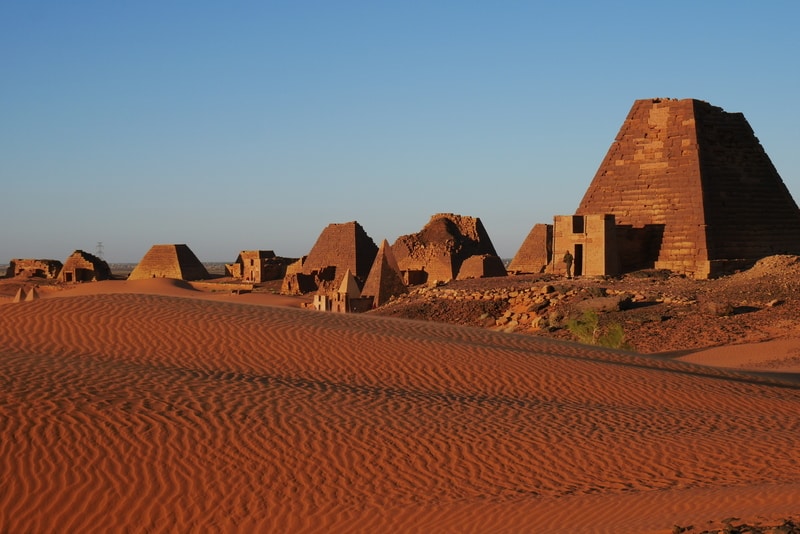
Our group set up camp near the gates of the Meroe Pyramids Archeological Site, just over the dunes from the area’s main cluster of temples. The landscape surrounding our camp consisted of purple-hued hills, interrupted by a snaking sea of orange sand.
Despite the fact that the Meroe Pyramids are Sudan’s only well-established archeological site, we had the entire area to ourselves during our early-morning visit. For over an hour, we watched the sun rise above the majestic ruins and paint the surrounding landscape in warm shades of pastel.
It was surreal. Enchanting. Magical.
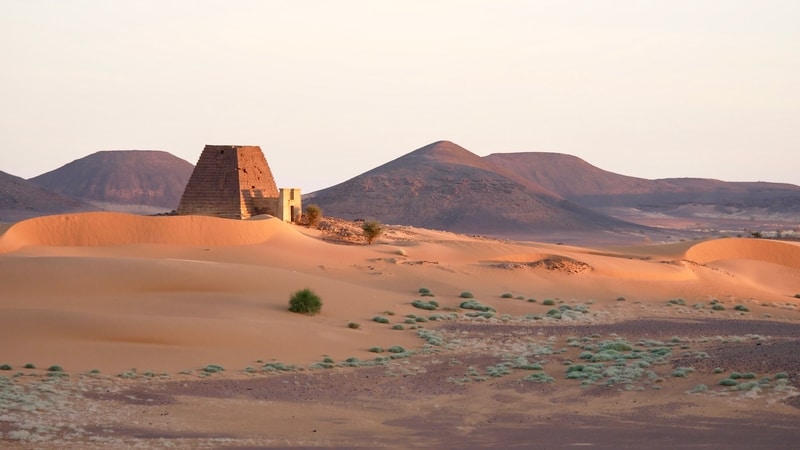
We visited the Meroe Pyramids on my 30th birthday. I couldn’t have asked for a more striking and memorable location to celebrate three decades on Earth.
THE MUSAWWARAT ES SUFRA TEMPLE
Musawarat es Sufra is the largest Meroitic temple complex in Sudan. Constructed in sandstone, the site’s main features include a Great Enclosure and a Lion Temple.
Though it resembles the temples of Egypt in many ways, Musawwarat es Sufra has distinct influences that are wholly unique to Sudanese temples. Most significant are the representations of elephants and other wild animals that once roamed around this region of Africa.
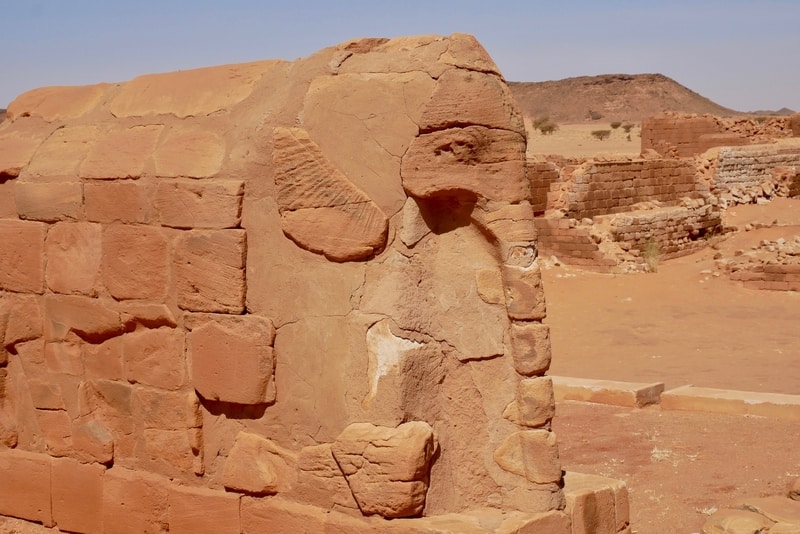
The engravings of lions, elephants and giraffes made Musawwarat es Sufra’s Great Enclosure one of the more interesting temples we saw during the entirety of our trip through Egypt and Sudan.
Situated a few hundred meters away from the Great Enclosure, the intricately-carved Lion Temple of Apedemak dates to the 3rd century BC. Its ornate reliefs are remarkably well preserved.
THE NAQA TEMPLE
Like Musawwarat es Sufra, Naqa lies in the heart of the Sudanese Desert. Its location away from the Nile makes it unique among the temples of Ancient Egypt and Nubia.
The Naqa archeological site consists of a large and well-preserved Temple of Amun that dates back to the first century BC. Notable features include a Hypostyle Hall with splendid columns and hieroglyphics, and a row of statues representing rams (reminiscent to those at the Karnak Temple in Luxor).
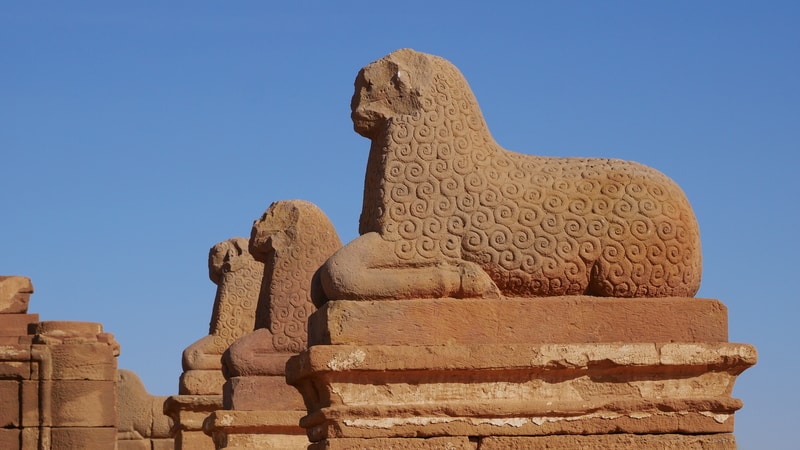
Another small Lion Temple lies within walking distance of the Amun Temple at Naqa. It has some of the most incredible exterior carvings of any place that we visited during our month in North Africa.
Adjacent to the Lion Temple, a stunning Roman kiosk boasts Hellenistic elements and floral embellishments.
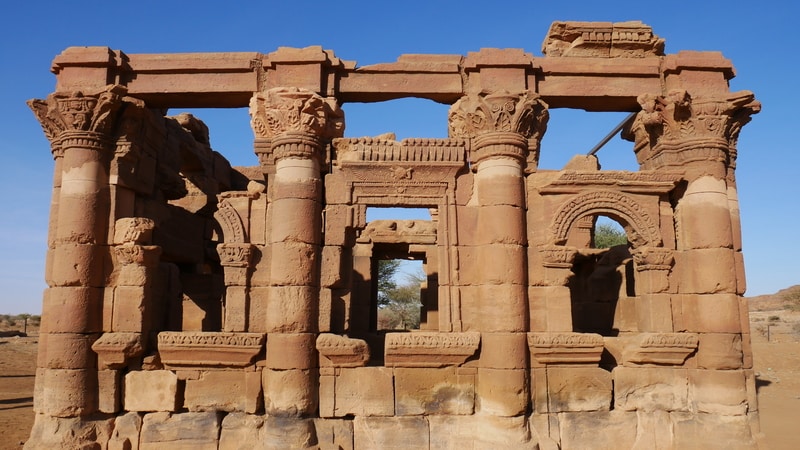
Since there is so little travel literature on Sudan, I really didn’t know what to expect of the country’s Nubian temples. I hadn’t seen pictures of Musawwarat and Naqa prior to visiting, nor did I even know they existed.
I simply booked a tour to Sudan and let myself be slowly blown away by the unexpected magic that lies deep in the reaches of the Sahara.
KHARTOUM: SUDAN’S CAPITAL CITY
Our Sudan travels began and ended in Khartoum. So, at the tail end of our week-long adventure, Dan and I dedicated a day and a half to the country’s bustling capital city.
Khartoum isn’t exactly a beautiful city in the classical sense of the word. It is dusty and sprawling, and relatively lacking in things to see. Yet, situated at the confluence of the Blue and White Niles, Khartoum defies expectations with its pleasant atmosphere, laid-back vibe, and friendly residents. The city’s excellent museum, its fascinating markets and its idyllic Nile-side views make it a relaxing antidote to the hubbub of some of Africa’s other large metropolises.
- THE SUDAN NATIONAL MUSEUM
With limited time in Khartoum, visiting the Sudan National Museum should be a top priority. Though the museum’s collection of artifacts pales in comparison to that of Cairo’s Museum of Antiquities, its exhibits paint a picture of Nubian Civilization that I doubt can be rivaled anywhere else in the world.
Outside of the museum’s main enclosure, the three reassembled Nubian temples are some of the country’s finest architectural gems.
- THE FRIDAY SUFI GATHERING
You won’t see many tourists wandering the streets of Khartoum on a daily basis. But during the weekly Sufi ceremony that takes place every Friday, they all seem to emerge from the shadows.
On our last day in Sudan, we headed to to the Omdurman neighborhood of Khartoum for an opportunity to witness the Sudanese whirling dervishes.
Each Friday afternoon, at around 4pm, adherents of Sufism gather to dance and pray—attracting large crowds of observers and participants. Since the procession draws more tourists than just about anything else in Sudan, it also attracts large numbers of Sudanese youth hoping to improve their English.
The gathering isn’t exactly what one might expect of a typical whirling dervish ceremony, but the procession and chanting of red-and-green-clad faithfuls is a fascinating spectacle nonetheless.
- THE KHARTOUM CAMEL MARKET
On the morning of our departure from Khartoum, Dan and I chose to travel to the outskirts of the city in search of the sprawling camel market that takes place twice a week. Every Wednesday and Saturday, hundreds of people travel to Khartoum’s outskirts for what I can only assume is one of the world’s great camel markets.

Reminiscent to the livestock market in Karakol Kyrgyzstan, it is a place in which vendors and buyers converge to barter for the finest animals in the area.
- THE CONVERGENCE OF THE BLUE AND WHITE NILES
The great Nile River sustains life in one of the harshest habitats on earth. Since Khartoum lies at the convergence of the Blue and White Niles, its location provides an opportunity to witness the place in which two tributaries combine to create the longest river on Earth.
Though I wouldn’t prioritize it over a visit to the Sufi gathering or museum, a boat trip up the Nile is worthwhile for those who have the time.
****
Traveling to Sudan had been on the back of my mind since I first laid my eyes on a photo of the Meroe Pyramids.
I don’t know what it was about the photo that left me breathless, but I can only assume it had to do with the fact that such a remarkable wonder of the world remains largely secret. I knew I would find a way of visiting, safety permitting.
Traveling in Sudan is by no means easy or straightforward. The visa hassle alone discourages many travelers from setting foot on the country’s sandy soil. Add that to Sudan’s lack of public transit infrastructure, its elevated position on most travel advisory lists, and its lackluster accommodation options. It is no wonder so few people choose to visit.
Yet, Sudan and its people deserve more credit than they receive. The country is safe, beyond hospitable, and replete with jaw-dropping tourist attractions.
For adventurers willing to put in a little extra effort, the rewards of seeing some of the world’s greatest wonders without anyone else in sight, are truly indescribable.
________________
Did You Enjoy this Guide to the Top Tourist Attractions in Sudan? Pin It!
